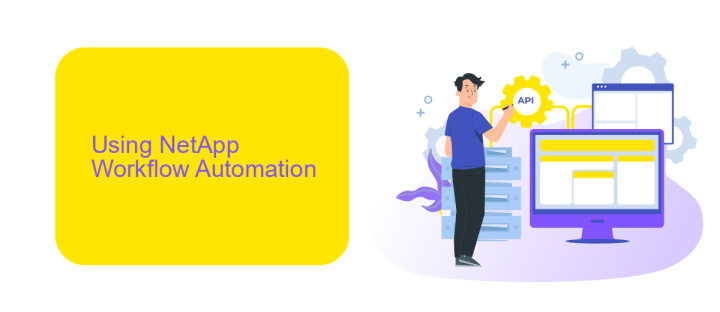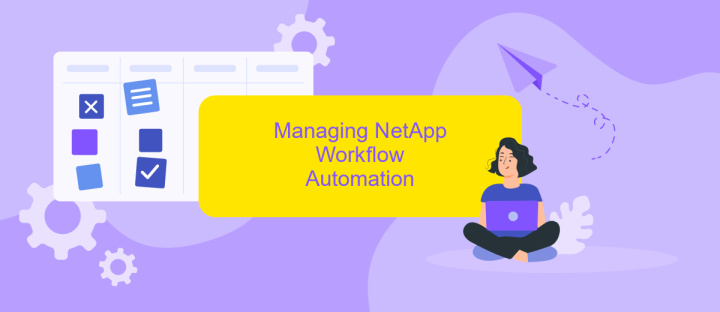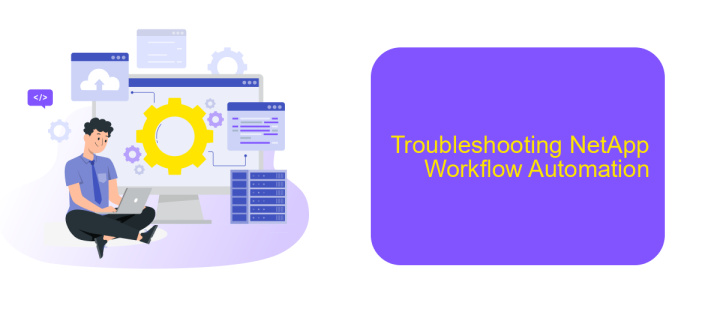NetApp Workflow Automation Documentation
NetApp Workflow Automation (WFA) is a powerful tool designed to streamline and automate complex IT tasks, enhancing operational efficiency and reducing manual intervention. This documentation provides comprehensive guidance on setting up, configuring, and utilizing WFA to its full potential. Whether you're a novice or an experienced user, this guide will help you leverage WFA to optimize your workflows and improve productivity.
Introduction to NetApp Workflow Automation
NetApp Workflow Automation (WFA) is a powerful tool designed to streamline and automate complex IT workflows, making data management more efficient and less prone to human error. By leveraging WFA, organizations can significantly reduce the time and effort required to manage and maintain their IT infrastructure.
- Automates repetitive tasks, freeing up IT staff for more strategic activities.
- Integrates seamlessly with existing systems, providing a cohesive workflow environment.
- Offers a wide range of pre-built workflows, customizable to fit unique business needs.
- Enhances data accuracy and consistency across the organization.
To further enhance the capabilities of NetApp Workflow Automation, integration with external services like ApiX-Drive can be highly beneficial. ApiX-Drive allows for easy connection and synchronization between various applications and systems, ensuring that data flows smoothly and accurately across all platforms. This integration not only simplifies the automation process but also ensures that your IT infrastructure remains agile and responsive to changing business needs.
Using NetApp Workflow Automation

NetApp Workflow Automation (WFA) is a powerful tool designed to streamline and automate complex IT processes. By leveraging WFA, organizations can create, manage, and execute workflows that integrate various IT systems and applications, thus reducing manual intervention and minimizing errors. The intuitive interface allows users to design workflows using a drag-and-drop approach, making it accessible even for those with limited programming skills. Additionally, WFA supports a wide range of pre-built workflows, which can be customized to meet specific organizational needs.
To further enhance the capabilities of NetApp Workflow Automation, integrating it with other services can be highly beneficial. For instance, using a service like ApiX-Drive can facilitate seamless integration between WFA and various third-party applications. ApiX-Drive offers a user-friendly platform to connect different software solutions without the need for extensive coding knowledge. This integration allows for real-time data synchronization and automated task execution, thereby improving overall efficiency and productivity. By combining the strengths of WFA and ApiX-Drive, organizations can achieve a more cohesive and automated IT environment.
Managing NetApp Workflow Automation

Managing NetApp Workflow Automation involves several key steps to ensure efficient and streamlined operations. To begin with, it's crucial to establish a robust framework that allows for seamless integration with various systems and applications. This ensures that workflows are automated effectively, reducing manual interventions and potential errors.
- Define your automation goals and objectives.
- Set up integration points with relevant systems using tools like ApiX-Drive.
- Create and configure workflows based on predefined templates or custom requirements.
- Test the workflows to ensure they function as expected.
- Monitor and optimize workflows regularly to maintain efficiency.
Utilizing services like ApiX-Drive can significantly simplify the integration process, allowing for a more cohesive and automated workflow environment. By following these steps, you can effectively manage and optimize NetApp Workflow Automation, ensuring your operations run smoothly and efficiently.
Troubleshooting NetApp Workflow Automation

Troubleshooting NetApp Workflow Automation can be a complex task, but understanding common issues and their solutions can simplify the process. One frequent problem is connectivity issues between the automation tool and storage systems. Ensure that all network settings are correctly configured and that there are no firewall restrictions blocking communication.
Another common issue is related to incorrect user permissions. Verify that the user accounts have the necessary permissions to execute workflows. Additionally, make sure that any API keys or credentials used are valid and have not expired.
- Check network settings and firewall configurations.
- Verify user permissions and access rights.
- Ensure API keys and credentials are up-to-date.
- Review logs for specific error messages.
- Consult NetApp documentation for detailed troubleshooting steps.
For more advanced troubleshooting, consider using integration services like ApiX-Drive. This tool can help streamline the integration process and provide additional insights into where issues may be occurring. By leveraging such services, you can reduce downtime and improve the efficiency of your NetApp Workflow Automation.
Additional Resources
For those looking to delve deeper into NetApp Workflow Automation, there are numerous resources available to enhance your understanding and capabilities. The official NetApp documentation is a great starting point, providing comprehensive guides, best practices, and troubleshooting tips. Additionally, the NetApp Knowledge Base and Community Forums offer a wealth of user-generated content and peer support, which can be invaluable for solving specific issues and sharing experiences.
If you are interested in integrating NetApp Workflow Automation with other systems, consider using services like ApiX-Drive. ApiX-Drive simplifies the process of connecting various applications and automating workflows without requiring extensive coding knowledge. This tool can help streamline your operations and ensure seamless data flow between different platforms, enhancing the overall efficiency of your IT infrastructure. For more in-depth tutorials and use cases, visiting the ApiX-Drive website can provide valuable insights and practical examples.


FAQ
What is NetApp Workflow Automation (WFA)?
How can I create a new workflow in WFA?
Can I integrate WFA with other systems or applications?
What are the security features of WFA?
How can I troubleshoot issues in WFA?
Apix-Drive will help optimize business processes, save you from a lot of routine tasks and unnecessary costs for automation, attracting additional specialists. Try setting up a free test connection with ApiX-Drive and see for yourself. Now you have to think about where to invest the freed time and money!

